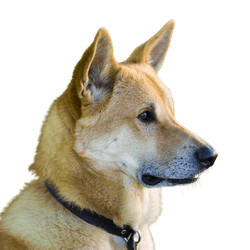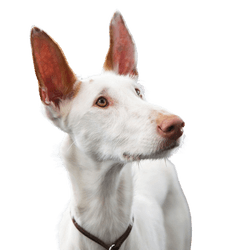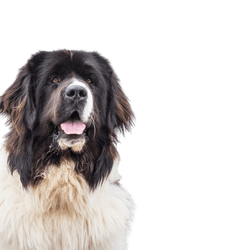
Siberian Husky Breed description: Character & Co
Siberian Husky
Facts & Origin
The Husky is a popular dog breed. The main reason being its attractive appearance. If you want to buy a Husky, you have to be very active. If this is not the case, neither you nor your dog will be happy. The Husky is used to Nordic conditions and suffers a lot in the heat.
When talking about a Husky, you actually mean the Siberian Husky. This dog breed has been recognised by the FCI. The Siberian Husky is classified in group 5 (point and primitive type dogs), section 1 (Nordic sled dogs) with standard no. 270. The country of origin is the United States of America (USA).
This strong and energetic dog must spend many hours a day burning out its energy, both physically and mentally. Suitable sports are:
- Jogging
- Running
- Cycling
- Draft sports (sledge, scooter or similar)
A Husky, that is not stimulated enough, is up to no good. Your garden must be made absolutely escape-proof. The Husky will otherwise find a weak link and will break out to escape for a few hours on its own. When this happens, its distinctive hunting instinct can pose a big risk.
Its enjoyment of socialising with other dogs often end up in unintentional offspring. A mixed breed Husky carries the genes of different breeds. For example, a mixed breed Husky can end up inheriting typical characteristics of another dog breed which tolerates the summer heat better. Very often the Husky is also compared and confused with the Alaskan Malamute, but the Husky is much smaller than the Alaskan Malamute - they look very similar superficially in regards to their colouring.
They are friendly towards people and other dogs. No problems regarding biting incidents or restrictions in dog keeping by the community are known. They are not suitable as watchdogs.
Due to their independent nature they do not think too much of "subordination exercises". Nevertheless, they can be trained. If you already have experience with dogs, you can also reach your goal with patience and a few tricks. A Husky does not bark much, but likes to howl.
What is the origin of the Husky?
The Husky originates in Northern Siberia. There, its ancestors were used as drought and working dogs by the nomadic peoples for over 2000 years. A loyal sledge dog that is willing to work was vital. That is why the Eskimos raised their Husky puppies among the circles of their family. This way, the bond to all family members was strengthened.
Only at the beginning of the 20th century (1907), a Russian fur trader brought these versatile dogs to Alaska. In the beginning he was smiled at when dog sled races were first introduced. These "small dogs" reached good placements in many demanding races. In 1910, the first Husky breeding was founded in Alaska. The initiator was the Norwegian Leonard Seppala (Musher) with his male dog Togo.
Despite the enthusiasm about this robust and original breed (pure breeding), the Husky was only recognised in the USA in 1930 and even later (1966) in Europe.
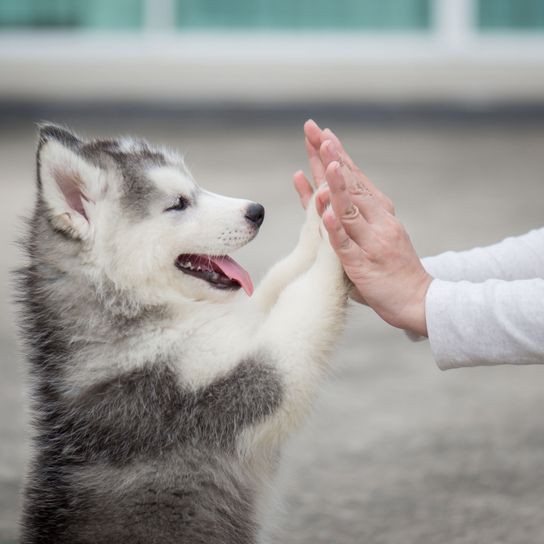

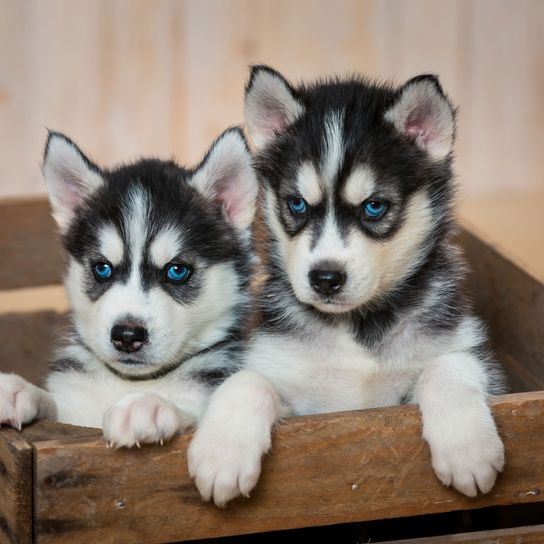

| Alternate Name | Husky |
| Origin | Russia |
| Life expectancy | 12 - 15 years |
| Care requirements | high-maintenance |
| Activity level | high |
| FCI group | Nordic Sledge Dogs |
| AKC group | working group |
| KC group | working group |
Siberian Husky mixes
Attitude, character and temperament of the breed
What are typical character traits of a Husky?
The dog breed Husky has developed over 2000 years. This original potential is also represented in the "modern" Husky.
- Endurance
- Willingness to work
- Sense of orientation
- Friendliness
- Gentleness
- Alertness
As an inhabitant of the far north, they also had to find their way in the wilderness and mastered this with the following characteristics:
- Independence
- Individuality
Character
Usage

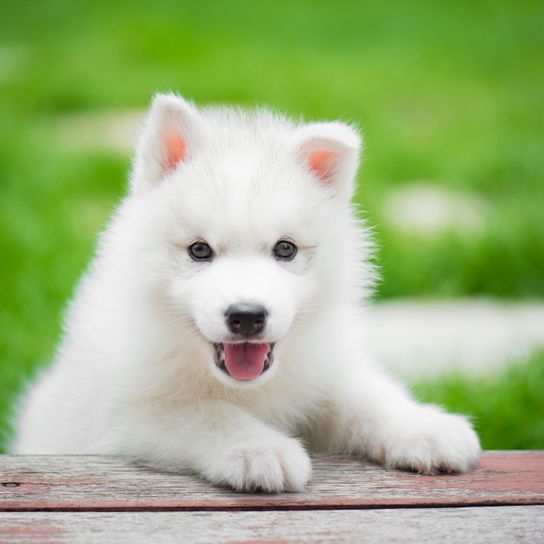

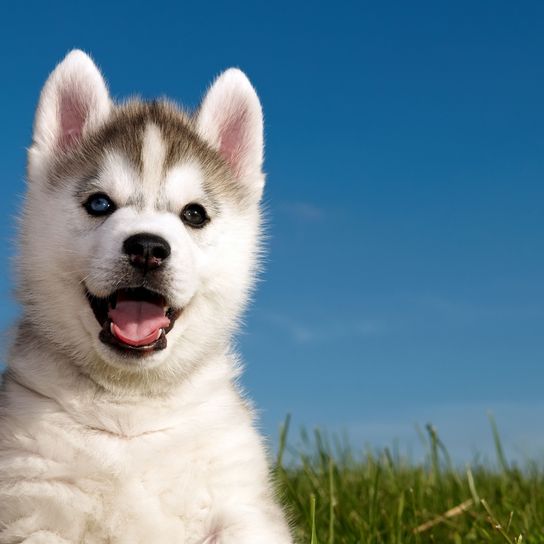

Health and breeding information
What are typical diseases of a Husky?
The huskies are prone to developing skin diseases. Especially common is a zinc-reactive dermatosis, which is caused by a reduced zinc intake of their food, a problem that is most likely linked to genetic factors.
The "modern" Huskies can also suffer from HD (hip joint dysplasia). In this really robust breed, HD diseases are mostly breeding flaws.
Furthermore, there is a susceptibility to hereditary eye diseases.
What should be considered when breeding a Husky?
A responsible breeder will have the parental couples tested for HD and hereditary diseases. If one of the two findings is positive, this Husky should not be used for breeding.
Husky breeding is divided into two lines. One breeding line focuses on beauty and appearance, the other on performance. Husky puppies from performance breeding are hardly suitable as family dogs. A Husky costs between 900 and 1200 Euros.
When buying a Husky, please pay attention to the veterinary examinations carried out and to the breeding line.


What are the breed characteristics of the Husky?
The Husky's coat reminds of a thick fur. Its extraordinary eyes can look at you penetratingly. Nevertheless, after a first assessment, their look will become friendly.
Its flowing way of walking effortlessly reflects endurance and speed. The proportions of the muscles on their strong body give an idea of the amount of strength this dog breed has.
Appearance and coat of the Husky
The compact body of a Husky is covered with a dense coat of medium length. The "plush" character of this coat is typical for this breed. A dense undercoat protects against cold and the top coat is water-repellent. The top coat can have different colour variations.
There are specimens with pure white fur or with additional red, grey or black tones. The basic colour is white. The additional colours are spread over their back and shoulders as head markings.
The medium sized head has stand-up ears and slightly almond-shaped eyes. Their eye colour is striking. They can vary between blue and brown. Sometimes the colour of the individual eyes is different, for example blue on the right and brown on the left eye.
The end of the back forms a bushy tail, which is sickle-shaped and carried upwards. The paws are smaller than in other dogs this size.
The care of a Husky is simple. With their dense coat, regular brushing is sufficient. The change their coat twice a year.
What is the average size of a Husky?
A Husky belongs to the medium sized dog breeds. The males reach a height of 53 to 60 cm measured at the withers. The bitches are naturally smaller and reach a height of 50 to 56 cm measured at the withers.
How much does a Husky weigh?
The body weight should be in proportion with their compact body shape and size. The males weigh between 20 and 28 kg. In bitches the weight varies between 15 and 23 kg.
What is the average age of a Husky?
The life expectancy lies between 11 and 13 years on average. Sometimes you can find references in literature that a Husky can reach 15 years of life.
| Fur length | medium |
| Fur | flat coated |
| Ear shape | Standing Ears |
| Tail | fanned out |
| Anatomy | rugged, strong, sporty |
| Size ♀ | 50 - 56 cm |
| Weight ♀ | 16 - 23 kg |
| Size ♂ | 54 - 60 cm |
| Weight ♂ | 20 - 27 kg |
| Suitable For | - |
Colors




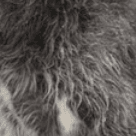
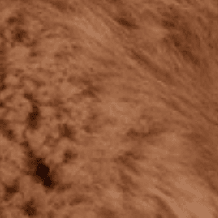



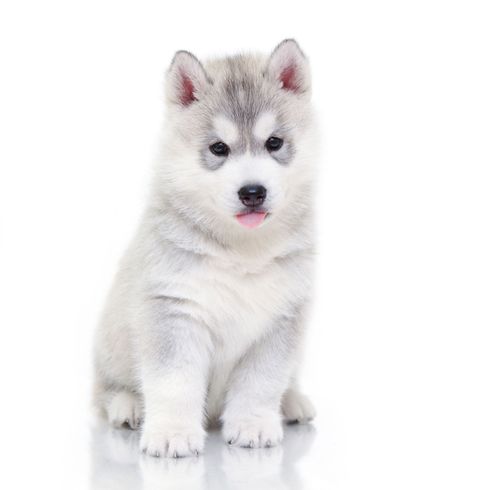
Known Diseases
Eye diseases
Often occur with allergies and intolerances.
Skin inflammations
Can be hereditary in certain breeds.
Hip dysplasia (HD)
The hip dysplasia or hip joint dysplasia of the dog (HD) is a maldevelopment of the hip joint.
FAQ
-
The Siberian Husky needs a few hours a day of physical exercise. Under 3-5 hours a day, the dog is not kept species appropriate.
-
Yes, for sporty families with a large garden and plenty of time for walks, the Husky can also be suitable as a family dog.
-
A purebred Husky costs about 900-1500 Euro.
-
A Husky needs plenty of exercise, a place outdoors and in a cool environment, and plenty of time for endurance training and mental workouts.
Other large dogs
Useful Articles
You can find articles that might interest you in the dogbible blog to match your favorite breed.
Visit our magazineto stay up to date on dog trends.
To find out more, view our Privacy Policy
Find here the breed that suits you and find out what character traits it has. Here you can also learn more about the origin, size and weight of your favorite breeds.
Matching your favorite breed, you'll find articles that might interest you on the dogbible dog blog.
Leaving the dog alone in the garden - advantages/disadvantages
Cute dog breeds you need to meet
KONG for the dog - the allround toy
Roller skating or skateboarding with the dog
Labrador as a therapy dog - procedure, costs, where, how, what and why just a Labrador









